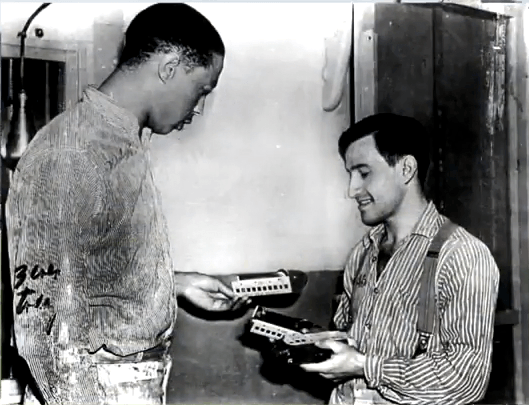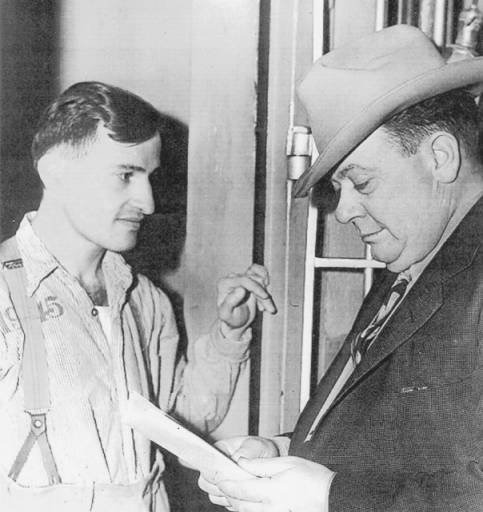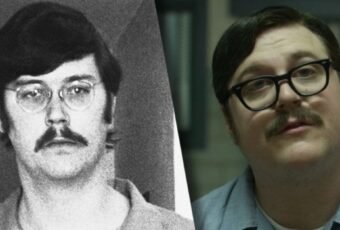Imagine being on death row, knowing that your life is about to end, but not fully grasping the finality of death. That was the reality for 23-year-old Joe Arridy. Despite facing a fate that would terrify most people, Arridy remained blissfully unaware of the severity of his situation.
In fact, when asked about his last meal, Arridy simply requested ice cream, seemingly unconcerned with the fact that it would be his last indulgence. This innocence and naivety made him stand out among the other prisoners on death row and even earned him the title of “the happiest man who ever lived on death row” from the warden.

Joe Arridy, born on April 29, 1915, was raised by his parents Henry and Mary Arridy in Pueblo, Colorado. From a young age, Joe struggled to communicate effectively, often using only a few words to express himself.
After consulting with doctors, Joe was diagnosed as an “imbecile,” a term used in that era to describe individuals with the mental capacity of a child between four and six years old. With an IQ of just 46, Joe found it difficult to learn and comprehend new information, causing issues early on in his education.
Sadly, after just one year of primary school, Joe’s headmaster recommended that he be kept at home due to his inability to learn. At the age of 10, he was sent to the State Home and Training School for the Mentally Disabled in Grand Junction, Colorado, where he remained for a number of years. However, Joe eventually ran away from the facility at the age of 21.
The murder of Dorothy Drain
August 15, 1936, is a day that would forever be etched in the memory of Dorothy Drain’s parents. Upon returning to their home, they were confronted with an unspeakable horror – their 15-year-old daughter lay lifeless in a pool of her own blood. The young girl had been brutally murdered in her sleep by a sharp weapon, possibly an axe, and was also found to have been raped.
But the tragedy did not end there. Dorothy’s younger sister, Barbara, had also been attacked and suffered a blow to the head. The girls’ parents were left to grapple with the unbearable pain of losing one child and caring for another who had been brutally assaulted.
It was soon discovered that the assault on the Drain sisters was not an isolated incident. Just two weeks prior, two other women in the same neighborhood had reported being attacked by a short man described as a “Mexican.”
The brutal nature of the attacks left the community shaken and desperate for answers. Who could commit such heinous crimes? And why?
The Arrest of Joe Arridy
The city police were under tremendous pressure to capture the person responsible for the brutal murder, as the news spread like wildfire, and hundreds of people gathered outside the house. Police Chief Arthur Grady wrote a piece about the case for a true-crime magazine, which was published just a few months after the incident.

Police Chief Arthur Grady wrote a piece about the case for a true-crime magazine, which was published just a few months after the incident.
“Pueblo has a population of about 50,000, and by 10 a.m. it seemed as though 49,000 of them had swooped down on Stone Avenue.”
On the 11th day after the murder, Sheriff George Carroll noticed a young man wandering around the railway yard and decided to question him. The man, Joe Arridy, was 21 years old, 5’5″ tall, weighed 125 pounds, and had a dark complexion due to his Syrian immigrant parents. This caught Sheriff Carroll’s attention as it matched the description of the “Mexican” individual provided by two women who claimed they had been grabbed from behind in Pueblo. Additionally, Joe said he had come to Pueblo by train, which further aroused suspicion.
Sheriff Carroll spent almost eight hours interrogating Joe Arridy over two days, but he didn’t record the confession he obtained during this time. Later on, when he was called to testify, he had to rely on his memory of the interrogation, as there were no notes or witnesses. According to his recollection, Joe had spied on the girls from outside, snuck in after their parents left, hit them in the head, undressed, sexually assaulted Dorothy, dressed again, and left.
During the interrogation, Sheriff Carroll asked Joe if he liked girls and followed it up with a question asking why he would hurt them if he liked them so much.
Puzzling Story By Sheriff Carroll
The story had numerous inconsistencies that raised questions about Joe Arridy’s involvement in the crime. For instance, he initially spoke about using a club to beat the girls but later changed it to an axe. When questioned, he could not explain where he obtained the weapon. Nonetheless, Sheriff Carroll maintained that Joe provided intricate details about the Drain house, such as the color of the walls in the girls’ bedroom, which suggested that he had been there.
Despite these discrepancies, Carroll arrested Joe and informed Chief Grady, who considered him a “nut” unable to read or write but knowledgeable about the murder of Dorothy Drain. It was clear that Joe’s confession was the product of the aggressive and manipulative interrogation tactics employed by Carroll.
Meanwhile, Chief Grady arrested Frank Aguilar, who was found guilty of the murder and executed after being identified by Barbara Drain. Frank had previously worked with the Drains on WPA projects and had been dismissed. Additionally, he had seen the girls at work sites, and police found a hatchet head with nicks that matched the wounds inflicted on Dorothy.
The Confusing Case of Joe Arridy
After the hatchet was found at Frank’s house, the story suddenly changed and implicated Frank in the crime. However, Joe’s story was inconsistent and unreliable, and he provided different versions of events depending on who was questioning him. He also lacked knowledge about the basic elements of the crime, such as the murder weapon and the order in which the victims were killed.
When Joe was brought face to face with Frank, Joe identified him as the perpetrator. However, Frank denied knowing Joe and denied any involvement in the crime. Despite the lack of evidence linking Joe to the crime and the inconsistencies in his confession, he was still charged and convicted of the murders, while Frank was found guilty and executed.
Why was Joe Arridy sentenced to death?
It is worth noting that during Arridy’s trial, his defense attorneys did not present any evidence of his innocence or challenge the reliability of his confession. Instead, they focused on his mental disability and argued that he should not be executed because he was not legally sane. However, the jury rejected their argument and found Arridy guilty, and he was sentenced to death.
Despite the evidence suggesting Joe Arridy’s innocence and his obvious lack of mental capacity, local law enforcement and the public continued to believe that he and Frank Aguilar were involved in the crime. Three psychiatrists testified during Arridy’s trial, stating that he was mentally handicapped with an IQ of 46 and the mental capacity of a six-year-old. However, he was still found guilty and sentenced to death.

Joe Arridy was executed by a gas chamber on January 6, 1939. The prison staff had to build a special chair to accommodate Arridy’s small frame, and they had to use a phone book as a booster seat. Despite his mental disability, Arridy was deemed competent to stand trial, and he became one of the youngest people in US history to be executed.
After giving his toy train to another prisoner on January 6, 1939, Arridy was led into the gas chamber, where he grinned as the guards strapped him to the chair. He was reported to have smiled while being taken to the gas chamber. Momentarily nervous, he calmed down when the warden grabbed his hand and reassured him.
The attorney, Gail Ireland who appealed the Colorado Supreme Court on Arridy’s behalf, had written during the case “Believe me if he is gassed it will take a long time for the state of Colorado to live down the disgrace.”
In 2011, Governor Bill Ritter posthumously pardoned Joe Arridy, stating that “Pardoning Mr. Arridy cannot undo this tragic event in Colorado history. It is in the interests of justice and simple decency, however, to restore his good name.” The case of Joe Arridy serves as a reminder of the importance of ensuring that all individuals, regardless of their mental capacity, receive fair and just treatment under the law.











